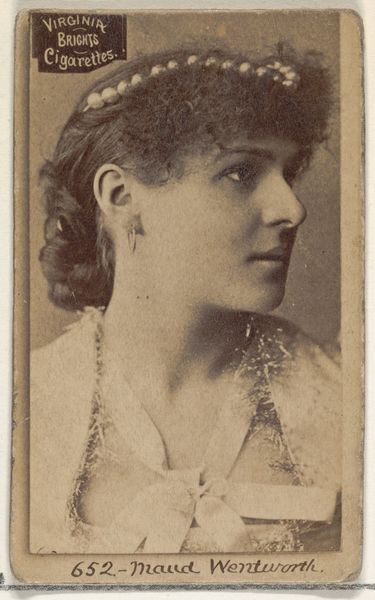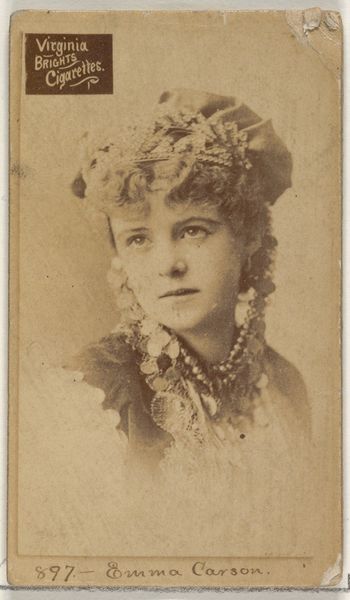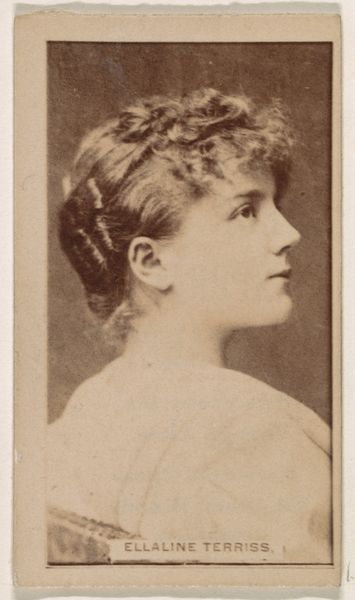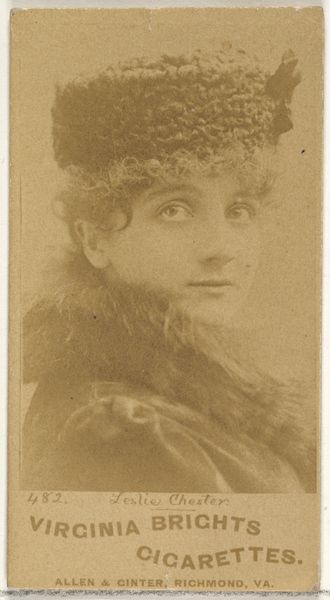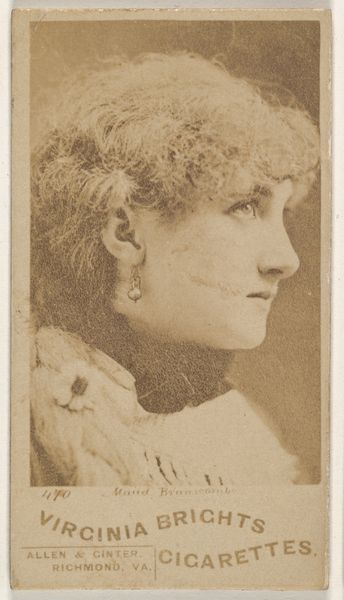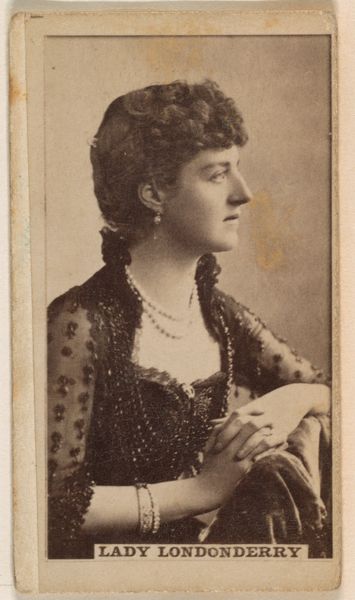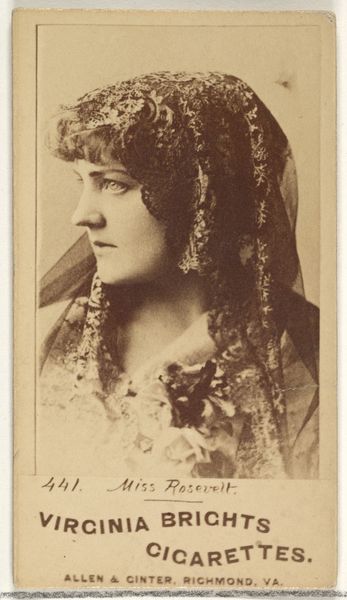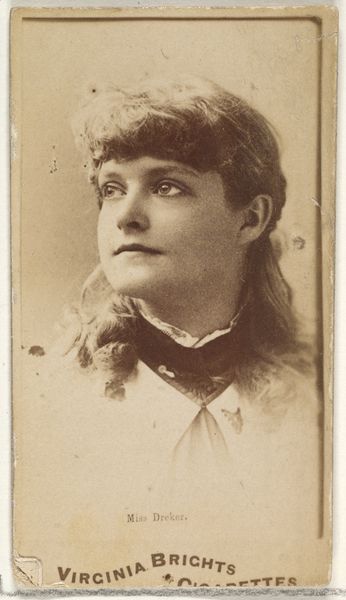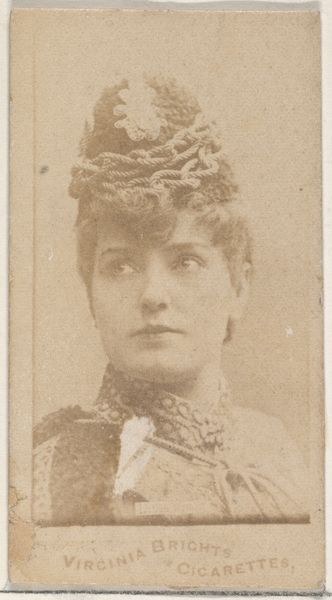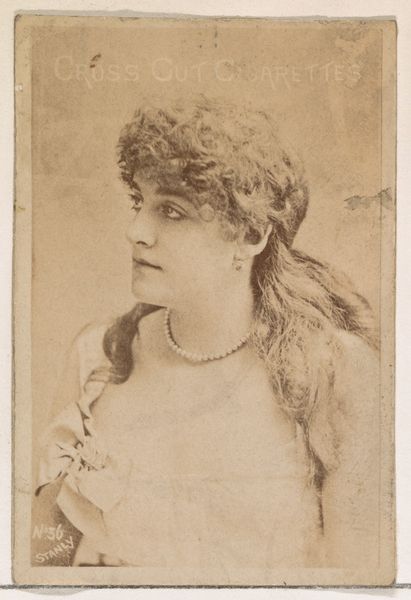
Grace Raven, from the Actresses series (N203) issued by Wm. S. Kimball & Co. 1889
0:00
0:00
drawing, print, photography
#
portrait
#
drawing
#
pictorialism
# print
#
photography
Dimensions: Sheet: 2 5/8 × 1 3/8 in. (6.6 × 3.5 cm)
Copyright: Public Domain
Editor: This is "Grace Raven," from the Actresses series by William S. Kimball & Co., dating back to 1889. It’s a photo that looks like a drawing – quite intriguing. It's a small print, sepia-toned, and there’s something quite alluring and fragile about her portrait. What can you tell me about it? Curator: This small card presents an actress, but more importantly, it is a byproduct of industrial capitalism. We need to consider the context of its production. William S. Kimball & Co. was a cigarette manufacturer. This wasn’t fine art in the traditional sense; it was a mass-produced promotional item, meant to be collected and traded. Editor: So, the image of Grace Raven was literally tied to the production of cigarettes? Curator: Exactly. The "drawing" is actually a photo mechanically reproduced and distributed within cigarette packs. We should be asking: who was Grace Raven, and what role did her image play in the marketing of tobacco products to a growing consumer base? The value wasn’t in Raven's likeness itself, but as a collectible incentive to purchase Kimball’s cigarettes. Editor: That completely changes how I see it! I was focusing on her as an individual, but it’s really about the larger system of production and consumption. Was photography commonly used this way back then? Curator: Photography in this context becomes another industrial process, linked to larger networks of labor, capital, and advertising. The photographic image, previously exclusive to a privileged elite, becomes democratized as ephemera, while masking the hazardous effects of consuming cigarettes on one's health. Editor: It’s fascinating to think about the layers of meaning embedded in this little card. The image of glamour masking the industrial realities of its production and consumption. Curator: Precisely. The material tells the real story: paper, ink, and a young woman’s image, all commodified within a complex web of industry and desire.
Comments
No comments
Be the first to comment and join the conversation on the ultimate creative platform.
